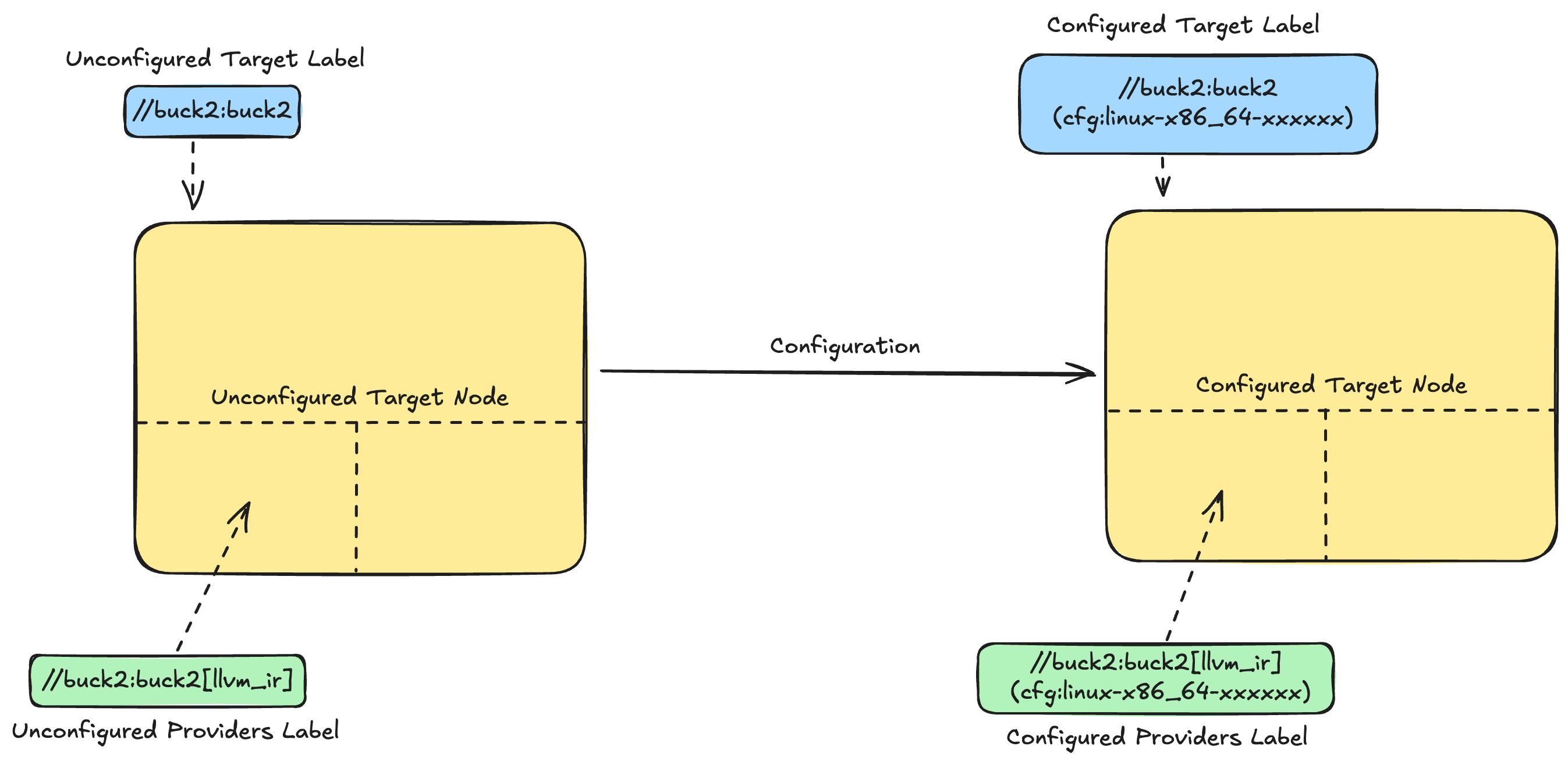Understanding Labels and Nodes in Buck2
Buck2's labels and nodes are fundamental components that work together to represent and track build targets in the build graph. Understanding how these different types of labels and nodes relate to each other is essential not only for writing BXL but also for working effectively with Buck2's architecture.
Overview
Buck2 uses several types of labels and nodes, each serving a specific purpose:
| target label | providers label | node | |
|---|---|---|---|
| unconfigured | TargetLabel | ProvidersLabel | UnconfiguredTargetNode |
| configured | ConfiguredTargetLabel | Label (same as ConfiguredProvidersLabel) | ConfiguredTargetNode |
Note: As part of our ongoing improvements, we are migrating to more explicit
type names. TargetLabel and ProvidersLabel will be renamed to include the
Unconfigured prefix for consistency.
The following diagram illustrates the relationships between these components:

Key Distinctions
Configured vs Unconfigured
In the targets build graph, Buck2 operates with two main perspectives on build targets: unconfigured and configured. You can refer execution model to see these two phase in a buck2 build.
Unconfigured components are configuration independent representations. Think
of them as the blueprint of your targets. For example, //buck2:buck2 is the
representation of buck2's unconfigured target label.
Configured components, on the other hand, include all the platform-specific
details and other configurations needed for actual building. They have the
necessary information about how to build it for a specific platform or
configuration. For example, //buck2:buck2 (cfg:linux-x86_64-xxxxxx) is the
representation of buck2's configured target label.
Labels vs Nodes
Labels are identifiers that uniquely reference targets in your build graph.
They're like addresses that tell Buck2 which target you're talking about. For
example, //buck2:buck2 is an unconfigured label that points to a specific
target.
Nodes contain the actual information about targets. They hold the data about what a target is, what it depends on, what attributes it has, etc.
Target Labels vs Provider Labels
Target labels (both configured and unconfigured) identify complete build
targets. For example, //buck2:buck2 refers to an entire target.
Provider labels (both configured and unconfigured) represents a specific
part of a target. For example, //buck2:buck2[llvm_ir] represents buck2
target's llvm_ir sub-target
Label and Nodes Conversion
This diagram shows how different components transform to each other using api
